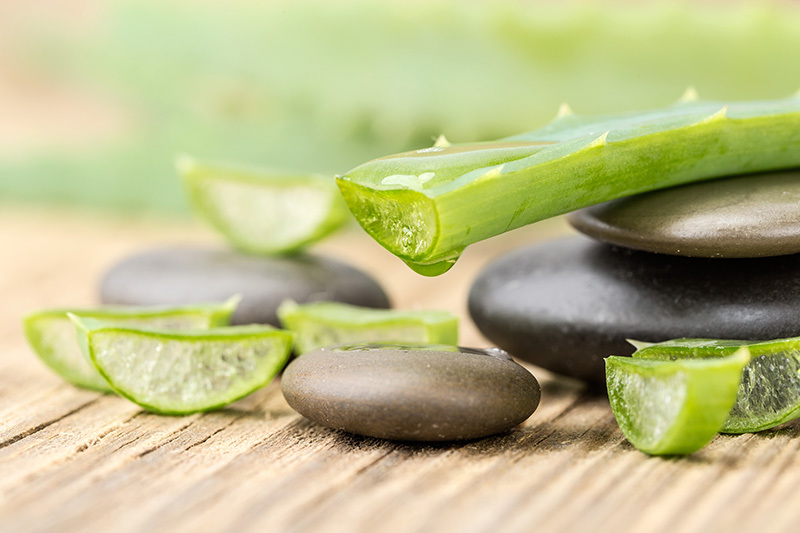Orchid Gardening 101: From Watering to Repotting
Orchids are some of the most captivating and diverse plants you can grow in your home or garden. With their exotic blooms, intricate shapes, and stunning colors, orchids have charmed gardeners for centuries. However, many believe orchids are difficult to care for -- a myth that can deter even experienced plant lovers. This comprehensive guide on orchid gardening will walk you through everything you need to know, from watering orchids correctly to mastering the art of orchid repotting. Get ready to cultivate healthy, vibrant orchids with confidence.
Why Choose Orchids for Your Garden?
Orchids aren't just beautiful; they're also incredibly rewarding plants to grow. Whether you're a beginner or a seasoned gardener, orchids can bring joy and elegance to your collection. Here are a few reasons orchids make an excellent choice:
- Diversity: With over 25,000 species and more than 100,000 hybrids, there's an orchid for every style.
- Longevity: Many orchids can live for decades with proper care.
- Year-round blooms: Some orchids can bloom multiple times a year, brightening up any space.
- Air purification: Like many houseplants, orchids help improve indoor air quality.
- Conversation starters: Unusual forms and stunning colors never fail to impress visitors.

Getting Started with Orchid Gardening
Before nurturing your first orchid, it's crucial to understand the basics. Successful orchid care starts with:
- Choosing the right orchid: Not all orchids are created equal. Some species are better suited to beginners than others.
- Providing optimal growing conditions: Orchids have specific light, temperature, and humidity preferences that differ from other houseplants.
Easiest Orchids for Beginners
New to orchid gardening? Start with these resilient varieties:
- Phalaenopsis (Moth Orchids): Known for their large blooms and ease of care.
- Dendrobium: Hardy and available in various colors.
- Cattleya: Famous for their vibrant, fragrant flowers.
- Oncidium (Dancing Lady): Adaptable and forgiving.
The Fundamentals of Orchid Care
1. Light
Orchids are particular about their light needs, and finding the proper balance is essential. Most orchids require bright, indirect light. Too much direct sunlight can scorch leaves, while too little will impede flowering.
- Phalaenopsis thrive in east- or west-facing windows with filtered sunlight.
- Cattleya and Dendrobium prefer brighter light and can tolerate some morning sun.
Tip: If the foliage is dark green, your orchid might need more light. If leaves turn yellow, move it away from direct sun.
2. Temperature and Humidity
Orchids generally prefer warm and humid environments. Most varieties do well with daytime temperatures of 20-26?C (68-79?F) and nighttime lows of 16-18?C (60-65?F). Humidity should be around 50-70% for optimal growth.
- Increase humidity by placing a tray of pebbles and water below your orchid pot.
- Group orchids with other plants to create a moist microclimate.
- Avoid sudden temperature changes or cold drafts which can stress orchids.
3. Orchid Potting Mix and Containers
Unlike typical houseplants, orchids don't thrive in standard soil. They require loose, airy, and fast-draining substrates.
- Bark mixtures: Most common and suitable for epiphytic orchids like Phalaenopsis and Cattleya.
- Sphagnum moss: Retains moisture, suitable for seedlings or orchids in dry environments.
- Leca (expanded clay beads): Encourage root aeration and are used in some semi-hydroponic systems.
The right pot should have several drainage holes. Clear plastic pots help monitor root health and moisture levels.
The Art of Watering Orchids
How Often Should You Water Orchids?
Watering is where many beginners go wrong. Orchids are highly sensitive to overwatering, which can quickly lead to root rot. Watering frequency depends on:
- The type of orchid
- Potting medium
- Humidity and temperature
- Pot size and type
As a general rule: water when the mix feels dry one to two inches below the surface, about once a week. Adjust frequency in hotter or drier months.
Best Practices for Watering Orchids
- Water in the morning to ensure excess moisture evaporates by evening, reducing disease risk.
- Use tepid water, preferably rainwater or distilled water. Most tap water is fine, but avoid salt buildup.
- Soak method: Place the pot in a basin of water for 5-10 minutes, then allow to drain thoroughly.
- Avoid letting water sit in the crown or leaf axils -- this can cause rot.
- Never let orchids sit in standing water; always empty any saucers beneath the pot.
Tip: Clear pots make it easy to check root color. Healthy roots are green or white. Silvery roots mean it's time to water; wet roots will be green.
Fertilizing Orchids: Feeding for Healthy Blooms
Orchids have modest needs when it comes to fertilizer, but regular feeding encourages lush foliage and frequent flowering.
- Use a balanced, water-soluble orchid fertilizer (like 20-20-20) once a month.
- During active growth, fertilize lightly every 2-3 weeks at half strength.
- Flush the potting medium occasionally with plain water to prevent salt buildup.
- Reduce feeding during the plant's rest period (typically autumn or winter for many orchids).
Remember: "Weekly, weakly" is a good mantra for orchid feeding -- better to under-fertilize than overdo it.
Recognizing and Resolving Common Orchid Problems
Every gardener experiences challenges. Here are the most frequent orchid issues -- and how to fix them:
- Yellow leaves: Usually from overwatering or too much direct light.
- Wrinkled leaves: Underwatering or root issues.
- Black spots: Fungal/bacterial infections or sunburn.
- No blooms: Insufficient light, incorrect feeding, or lack of rest period.
- Root rot: Caused by soggy substrate or poor drainage.
Treat diseases promptly by removing affected tissue, sterilizing tools, and adjusting care routines. Healthy roots and leaves are signs of successful orchid maintenance.
Orchid Repotting: When, Why, and How
Repotting orchids is essential for continued growth and health. Over time, potting mixes break down and stop draining properly, encouraging disease. Repotting gives roots fresh medium and space. But when is the right time to repot?
When to Repot Orchids
- Every 1-2 years, or when the potting mix breaks down.
- If roots are crawling out of the pot or the plant becomes top-heavy.
- When you see signs of root rot or poor medium drainage.
- Immediately after flowering, when the orchid enters a growth phase.
Preparing for Orchid Repotting
Gather your supplies:
- Fresh, appropriate orchid mix (bark, moss, etc.)
- Sterilized scissors or pruning shears
- New or cleaned pot with adequate drainage
- Optional: stakes and ties for support
- Gloves (for some varieties with skin-irritant sap)
Step-by-Step Guide to Repotting Orchids
- Remove the orchid from its pot. Gently squeeze or tap the pot sides to dislodge the plant.
- Shake off the old mix. Remove as much potting material as possible from the root ball.
- Trim dead roots. Using sterilized scissors, cut away any brown, mushy, or shriveled roots -- healthy roots are white, green, or silver and firm to the touch.
- Inspect the plant. Check for signs of pests or disease and treat as needed.
- Set in new medium. Place the orchid in the new pot and fill in around the roots with fresh mix, tapping lightly for stability but not compacting too tightly.
- Water lightly. Wait a few days before regular watering to allow root wounds to heal.
- Return to usual conditions. Place in its preferred spot and resume your care routine.
Tip: It's normal for newly repotted orchids to take time recovering. With patience and proper care, new roots and leaves will form.
Bonus Tips for Stunning Orchids Year-Round
- Rotate your orchid's position every few days for even growth.
- Avoid misting flowers to prevent premature wilting or rot.
- Research your orchid species for particular needs--some require a specific seasonal rest to re-bloom.
- Groom regularly: Remove faded blooms and yellow leaves to direct energy to healthy growth.
- Monitor pests like mealybugs, scale, or spider mites, especially in dry indoor environments.
- Be patient: Some orchids may skip blooming for a season while they establish.

Frequently Asked Questions (FAQs) about Orchid Gardening
Are all orchids hard to grow?
No! Many types, such as Phalaenopsis, are quite forgiving and perfect for beginners. Choose easy-care species and give them proper light, water, and humidity.
How do I get my orchid to bloom again?
Most orchids will bloom annually under ideal conditions. Ensure enough light, a modest fertilizer schedule, and a rest period in winter. If blooms don't appear, reassess lighting and feeding routines.
What's the best potting mix for orchids?
Most common orchids do best in bark-based mixes. Some species prefer sphagnum moss or even semi-hydroponic setups. Avoid regular potting soil as it retains too much moisture and suffocates roots.
How long do orchid blooms last?
Depending on the species and care, orchids may flower for 2-4 months. Proper watering, humidity, and feeding can extend bloom time.
Can I grow orchids outdoors?
Yes, in frost-free climates or during warm seasons. Outdoor orchids may benefit from filtered light and increased humidity, but must be protected from wind and sunburn.
Conclusion: Make Orchid Gardening a Rewarding Hobby
Orchid gardening offers a spectacular way to add color and elegance to any home or garden. By mastering the essentials -- from watering orchids properly to repotting orchids when needed -- you can enjoy thriving plants and dazzling blooms year after year. Remember to start with beginner-friendly varieties, pay attention to light and humidity, and embrace learning from each experience.
With a little patience and the tips provided in this Orchid Gardening 101 guide, your orchids will flourish, bringing life and beauty to your personal space. Happy growing!

